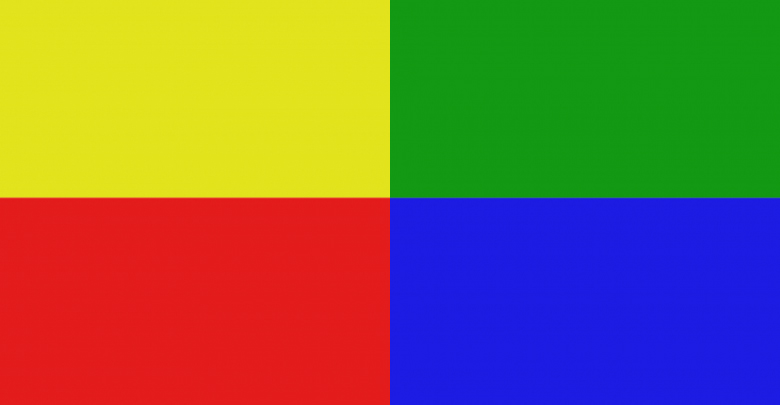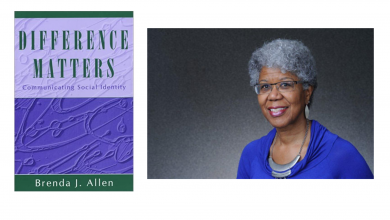Competing Values Framework
The Competing Values Framework can help you be a better trainer by giving you a framework to understand the diversity of behaviors that people exhibit on a team.

Why did I choose this tool?
Having worked under Jeff DeGraff, one of the original creators of the framework, I personally saw the power of this model of thinking. It helped teams through innovation and change management and provided a simple and clear way to differentiate team behaviors and how those created tension and complementarity. It is a framework that I have used in work contexts, personal contexts, and throughout my life. I find myself saying things like a certain person is more of a blue than a yellow, certain projects tend to be red more than blue, and certain teams have more yellows than greens.
How does this apply to being a trainer?
As a trainer, this framework can help us manage the diversity of behavioral styles of the participants but also of the trainers.
With the participants, this framework may help us understand why some people are frustrated with how slow things are moving and others with how quickly they’re moving. It may help us understand why some participants learn better with activities that are more structured and others that are more free-flowing. It may help us understand why some participants want to give everyone an opportunity to speak and others care less about the process and more about the result.
With our training teams, this framework may help us understand how to create the right team balance, how to run the most effective meetings, and how to communicate in meaningful ways. For example, if we have a team full of blues, we will probably want a short and fast meeting focused on results. If it’s a team full of yellows, we’ll probably want a comprehensive and democratic meeting where everyone is allowed to contribute their voice, no matter how long it takes, because the goal is to learn and share. For building the team, it will help us see the gaps—if we have all blues, we may want some reds, otherwise there may be no process and structure to what we’re doing. If we don’t have any greens, the ideas may not be out-of-the-box enough. If not enough blues, then our team may not hit goals and have external achievements—great projects that nobody knows exist and have no funding.
Content
The Competing Values Framework (CVF) is a framework created at the University of Michigan Ross Business School by Jeff DeGraff, Robert E. Quinn, Kim S. Cameron, and Anjan V. Thakor. It has been used in many applications, especially for the management of teams and as a different way of understanding the diversity of people on a team, but it can be applied towards the diversity of any group.
Since being developed by the four professors, the CVF has evolved to have variations based on different contexts. For example, Robert E. Quinn has adapted it towards Transformational Leadership, and so his version seems to be more adapted towards that, Jeff DeGraff has adapted it towards the context of innovation, and many others have adapted it as they see fit. The approach that I’ll describe below borrows from the version from Jeff DeGraff.
The CVF divides people into one of four behavioral quadrants identified by colors: yellow, green, blue, and red. A person doesn’t exist in just one quadrant, and depending on the context, may be in different quadrants—the point of the framework is not to firmly place someone in a box, but to provide a framework to begin the conversation and to see the diversity of perspectives and behaviors that someone may bring to the group. The two dimensions of the quadrant are 1) internal vs external and 2) focused vs flexible.
Internal vs. external
This is the dimension of orientation. Internal means internally-oriented, either towards the group or the individual. External means externally-oriented, looking outside the group or the individual.
Focused vs. flexible
This is the dimension of attention. Focused means that the attention is focused. Flexible means the attention is flexible.
Both of these will become more clear with examples of each quadrant.

Yellow (Collaborate)
The top-left quadrant is the yellow quadrant, or collaborate. It is internally-oriented and flexible. It is about long-term development, and doing things together.
Red (Control)
The bottom-left quadrant is the red quadrant, or control. It is internally-oriented and focused. It is about incremental changes, and doing things right.
Green (Create)
The top-right quadrant is the green quadrant, or create. It is externally-oriented and flexible. It is about breakthrough changes, and doing things first.
Blue (Compete)
The bottom-right quadrant is the blue quadrant, or compete. It is externally-oriented and focused. It is about short-term performance, and doing things fast.
How do I see the quadrants in terms of being a trainer?
| Type of event | Yellow | Red | Green | Blue |
| Meetings | Wants everyone to have a chance to speak | Wants there to be an agenda and for everyone to follow it | Wants to talk about new ideas | Wants meetings to be as short as possible, focusing on the targets and goals |
| Speed | Slowest | Slow | Can be slow or fast | Fast |
| Style of workshops | Slow, collaborative, reflective | Structured, organized | Confusing, flexible, boundary-pushing | Fast, competitive |
| What gives credibility | Something that has received group consensus | Something that has been proven to work over and over again | Something that is creative, new-to-the-world | Something that has won a lot of external recognition |
| Orientation | We | It | I | You |
| Ideal trainer colleague | Works well with others | Fits into the system | Thinks outside the box | Is recognized in their field |
| Ideal participant applicant | Describes the communities to which they belong | Follows all the rules on the application | Passionately describes why they want to participate | Lists their achievements and awards |
| Respect for the rules | Agrees on the rules | Follows the rules | Challenges the rules | Exploits/works around the rules |
| Project success | Brought people together | Went smoothly | Created something new | Hit the targets, achieved external recognition |
| Evaluation success | All participants felt connected to the trainers and the other participants | Things were on time and overall no logistical problems | A few participants had breakthrough realizations | Participants gave high evaluation scores |
| Facilitation style | Wants to make sure everyone has a chance to contribute | Wants structure for how participants contribute | Wants the people with new ideas to speak | Wants participants to work fast, to achieve the workshop goals |
| Time extensions | Extends time so that everyone has a chance | Doesn’t want to extend time | Extends time until something new is created | Extends time until the goals are reached |
How does this demonstrate a knowledge of diversity-related mechanisms?
There are many aspects to diversity—the CVF talks about one aspect that many people may not discuss when talking about diversity, and that’s diversity in behavioral style. Often, the conversation around diversity centers on ethnicity, gender, age, sexual orientation, and other identity categories. I like the CVF because it shows that while people may have the same social identities, they may have different behavioral styles, or conversely, while some people may have different social identities, they may have similar behavioral styles.
How could the CVF help me deal with the diversity of a training group?
The CVF can help us design our workshops, organize groups of participants, resolve conflicts with certain participants, choose a diverse blend of participants, articulate the reasons for why we chose such a group, know how to delegate which tasks to which people, reflect on why certain things worked and others didn’t work so well, etc. It helps us provide a framework and structure to what is happening in the group dynamics.
The CVF is one framework of many that may help us better understand that people behave differently and in knowing that there is a diversity of behavior, we can be better prepared for encountering that diversity in our trainings. There are many more resources to learn about the CVF and if you are curious to learn more, I highly encourage you to pursue them further.
Reflection Questions:
- Which color do you think you most closely embody?
- Which color do others think you most closely embody?
- Which color do you think you least embody?
- Which color do others think you least embody?
- Which colors do you struggle to work with?
- Which colors do you find it easy to work with?
- How would you design a reflection session that blues would love?
- How would you design a reflection session that reds would love?
- How would you design a reflection session that yellows would love?
- How would you design a reflection session that greens would love?
Exercises:
How to apply it in everyday life
- Go over the CVF and try to identify who on your team is likely to be in which quadrant.
- Try to identify in which quadrants your family members would likely be.
- Try to identify how the CVF relates to other elements of diversity, such as identity. For example, try to guess which cultures would tend to be in which quadrants. I say “tend” because the point of the CVF is that people’s behaviors don’t always match with their identity.





